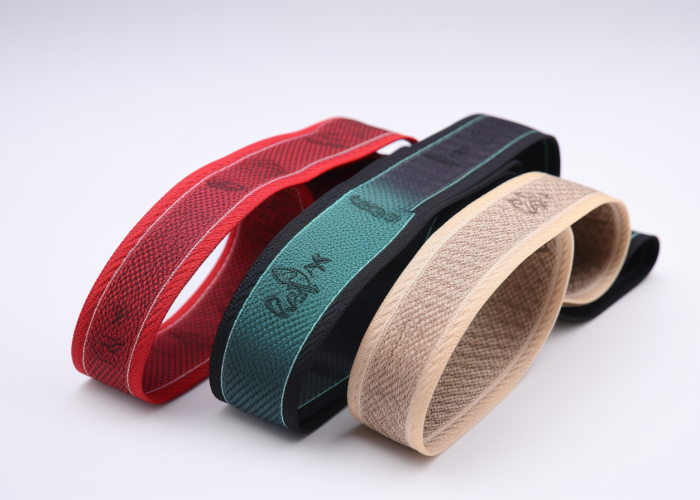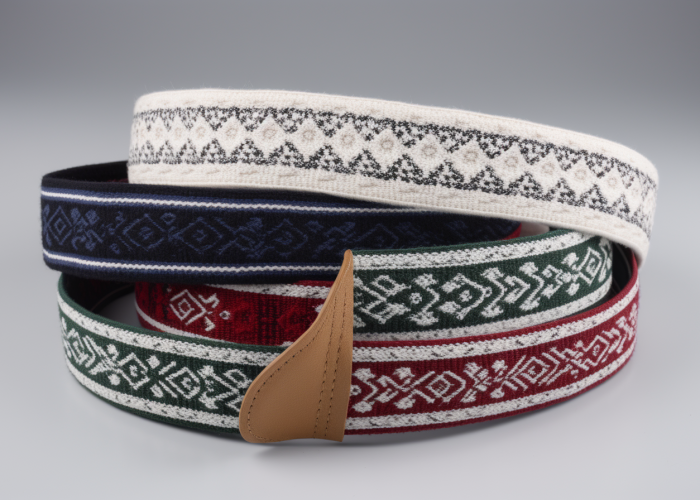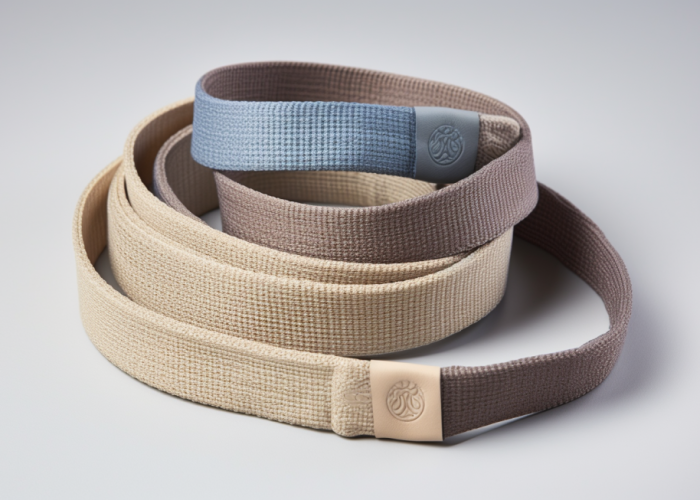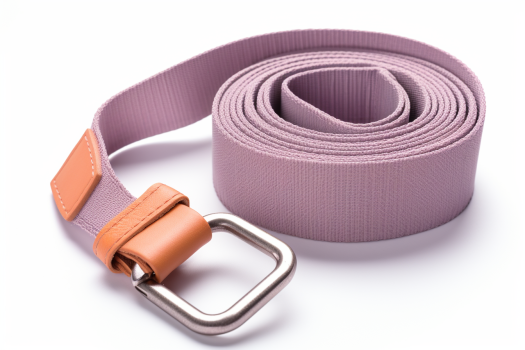As a custom webbing manufacturer specializing in fitness and yoga applications, we’ve developed elastic webbing solutions for brands creating yoga straps, resistance bands, and rehabilitation equipment. The choice between elastic and non-elastic materials significantly impacts product performance and user safety. We provide tailor-made webbing solutions and engineering consultation to help product developers optimize their yoga strap designs for specific applications and performance requirements.
Yes, elastic webbing is ideal for dynamic stretching and rehab, but not suitable for yoga poses needing firm support or precise alignment. Its 15–25% stretch aids flexibility and resistance training, with 800–1200 lbs tensile strength, but reduces stability by 30–40% compared to non-elastic cotton or polyester—making it unreliable for balance work or binding poses.
Our guide details manufacturing specs for elastic yoga strap webbing, including ideal materials, dimensions, and production techniques to ensure durability and performance for your brand.


Webbing manufacturing expert with 15+ years of experience helping product developers build high-performance straps for industrial, medical, and outdoor use.
Elastic webbing offers 15–25% stretch and added comfort for dynamic or flexibility-focused practices, while non-elastic webbing ensures stability and precise control during traditional yoga poses. The core difference is how each material responds under tension: elastic webbing stretches with movement, while non-elastic options hold firm.
Elastic straps typically support 800–1,200 lbs and deliver 85–95% stretch recovery, making them ideal for warm-ups, rehab, or assisted stretching. Non-elastic materials—like cotton or polyester webbing—maintain the same load capacity but provide zero elongation, allowing fixed positioning for balance and binding poses. Testing shows elastic webbing reduces positional accuracy by 30–40% due to stretch under load.
From our manufacturing experience, elastic webbing suits users who need flexibility and gentle resistance. Non-elastic straps remain the standard in yoga studios where precise alignment and consistent length are key to technique and safety.
Property Elastic Webbing Non-Elastic Webbing
Stretch Capacity 15–25% 0%
Tensile Strength 800–1,200 lbs 800–1,200 lbs
Positional Stability Moderate (±30–40%) High
Recovery Rate 85–95% Not applicable
Best Uses Flexibility, rehab, warm-up Balance, alignment, studio use
Design Tip: Use elastic webbing for comfort-oriented or mobility-based products, and choose non-elastic webbing for yoga straps that demand structure, stability, and control.

Elastic webbing straps are ideal for dynamic stretching, physical therapy, warm-up routines, and restorative yoga where movement accommodation and comfort are priorities. These applications benefit from the webbing’s ability to stretch slightly under load, allowing for smoother motion and progressive resistance.
Elastic webbing typically provides 15–25% stretch with high recovery rates, reducing joint stress and enabling gradual flexibility gains. In therapeutic settings, this adaptability supports safe range-of-motion exercises without sudden tension spikes. It’s also preferred in practices that prioritize gentle flow or user comfort over strict positioning.
Best-suited applications:
From our manufacturing experience, elastic webbing performs especially well for users with limited flexibility, prenatal yoga, or seniors who need cushioning rather than rigid support.
Performance advantages of elastic webbing:
Elastic webbing is not suitable for yoga practices that demand high positional accuracy, rigid support, or precise alignment—such as Iyengar, Ashtanga, or advanced balance work. These applications rely on fixed-length, non-stretch straps to provide consistent resistance and structural integrity.
Elastic webbing can elongate under sustained tension, causing subtle shifts in body position that compromise technique or safety. For binding poses or inversions, this stretch introduces instability. It may also “snap back” when released, presenting a risk in certain setups.
Applications where elastic is unsuitable:
In our manufacturing experience, instructors consistently report better safety outcomes and technique retention when students use non-elastic webbing for these use cases. The risk of gradual slippage under load makes elastic materials a poor fit for structurally demanding practices.
Key limitations of elastic webbing:

Choosing elastic webbing means trading off some durability and precision for enhanced comfort and flexibility. While elastic straps improve user experience in gentle or therapeutic practices, they tend to wear out faster and lack the rigidity needed for certain disciplines.
Elastic webbing offers initial tensile strength of 800–1200 lbs, but its recovery performance typically drops 10–15% after 1,000 cycles, depending on usage and environment. Non-elastic webbing maintains consistent strength and shape across 5,000+ cycles, making it more reliable for high-volume or long-term use.
Performance trade-offs to consider:
From a product development standpoint, elastic webbing is preferred for rehabilitation or gentle yoga markets, while non-elastic webbing is better suited for performance-critical or cost-sensitive products.
Decision-making factors:

Elastic webbing suits flexibility-focused yoga applications but compromises stability for traditional poses requiring precise alignment. Non-elastic polyester or cotton provides superior durability and consistent support for structural applications. As a custom webbing manufacturer, we offer engineering consultation and tailor-made solutions. Contact us to explore manufacturing solutions tailored to your yoga strap requirements.
Our minimum order quantities start at 3,000 yards for standard elastic webbing specifications. For custom formulations, colors, or specialized stretch properties, minimum orders begin at 5,000 yards. We offer sampling services with 10-50 yard quantities to validate specifications before full production runs.
Standard elastic webbing orders ship within 2-3 weeks. Custom specifications including special colors, widths, or stretch properties require 4-6 weeks production time. We recommend 8-10 weeks lead time for new product launches to accommodate sampling, testing, and any specification adjustments needed.
Yes, our engineering team provides technical consultation on material selection, specification optimization, and performance trade-offs for your target applications. We help brands determine the best webbing solution based on their market positioning, user requirements, and manufacturing budget constraints.
Our yoga webbing meets OEKO-TEX Standard 100 certification for textile safety and REACH compliance for European markets. We also provide material safety data sheets and can accommodate additional testing requirements for specific market certifications your products may need for retail distribution.
Elastic webbing typically costs 15-20% more than standard polyester or cotton alternatives due to specialized manufacturing processes. However, this premium often justifies higher retail pricing for comfort-focused yoga products. We provide detailed cost analysis to help optimize your material selection for target price points.
Yes, we manufacture elastic webbing with stretch capacities ranging from 10-40% to match your product requirements. Most yoga applications perform best with 15-25% stretch, but we can adjust formulations for specialized applications like rehabilitation equipment (higher stretch) or hybrid yoga-fitness products (lower stretch for stability).